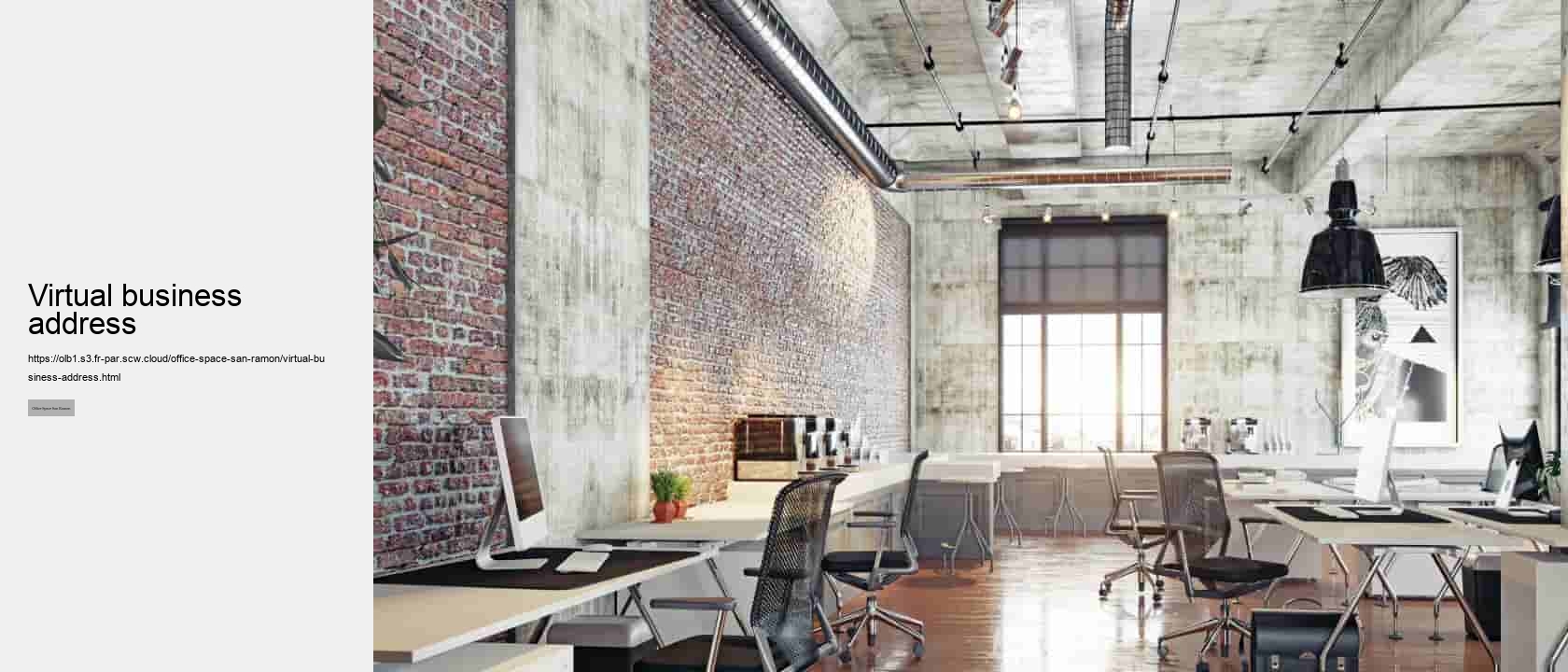

Conversely, an obscure or inconvenient site may stifle customer engagement, thereby impeding commercial success. Secondly, the proximity to essential amenities such as transportation hubs, financial institutions, dining establishments, and other service providers is indispensable for both employee satisfaction and client convenience. Staff members benefit from shorter commutes and nearby facilities that cater to their daily needs. Clients appreciate ease of access when visiting for meetings or transactions; thus, a strategically situated office is more likely to retain a content workforce while also attracting and maintaining a robust clientele. Thirdly, rental costs are inexorably tied to locational desirability.
Budget-conscious entities might opt for less prestigious addresses; however, this decision could compromise exposure and networking prospects critical for business vitality. Fourthly, the surrounding environment's prestige can bolster company image, leveraging social perception to attract high-caliber talent and discerning customers who associate geographic prominence with quality. A prestigious address serves as a silent ambassador that communicates success before any direct interaction occurs between the enterprise and its stakeholders. Lastly, safety concerns heavily influence location choice.
Safety perceptions not only affect day-to-day operations but can also have long-term implications on brand reputation if compromised. In conclusion, selecting an optimal office location is a multifaceted decision that reverberates through every aspect of business functionality—from rental outlays to employee morale; from consumer reachability to corporate prestige; from safety assurance to enduring viability—ultimately shaping the trajectory of business accomplishment. Understanding Lease Agreements: Key Terms and What to Look Out ForNavigating the intricacies of lease agreements can be daunting. These legally binding contracts between landlords and tenants delineate the terms under which a tenant is permitted to occupy a property.
A fundamental element of any lease is its duration, typically expressed in months or years. This period, known as the "term," determines how long you are obligated to pay rent and abide by other conditions set forth in the agreement. An awareness of whether the lease auto-renews or if notification is needed for termination at term end can prevent unwelcome surprises. Rent specifics are equally crucial; beyond amount, look for details on payment methods, due dates, late fees, and potential escalations over time.
Additionally, security deposit stipulations—how much, what it covers, and refund conditions—are vital to understand fully. Maintenance responsibilities must be clearly outlined within the lease agreement. Typically, landlords handle structural repairs while tenants manage daily upkeep; however, this division varies across different leases and jurisdictions. Clauses addressing alterations or improvements by tenants should also be scrutinized to avoid breaching contract terms.
Some leases prohibit subleasing altogether while others may allow it with landlord approval. Understand these provisions thoroughly if you anticipate needing flexibility during your tenancy. Insurance requirements frequently feature in lease agreements too.
Lastly but importantly are restrictions that may impact your lifestyle—pet rules, noise ordinances, guest policies—and penalties associated with violating such guidelines. In conclusion, understanding key terms in lease agreements is essential for safeguarding your rights as a tenant and ensuring a clear framework for your residency at a property. Carefully examine each clause: term length, rent details including increases and deposits; delineation of maintenance duties; subletting allowances; insurance necessities; and lifestyle restrictions—all elements that will shape your leasing experience profoundly.
These innovative environments are not just office rentals; they're incubators for collaboration, networking, and community building that provide a unique blend of flexibility and structure. Traditionally, entrepreneurs would face the daunting task of either working in isolation from home or taking on the substantial financial burden of leasing commercial office space. This dichotomy left many grappling with either distractions at home or untenable overhead costs.
Co-working spaces elegantly solve this conundrum by offering a middle ground—a shared workspace where resources can be pooled, reducing individual expenses while fostering a sense of collective ambition. The benefits these communal offices offer extend beyond mere cost savings. They are designed to inspire creativity through their aesthetics—often featuring open-plan designs, natural light, and thoughtfully curated common areas that encourage spontaneous interactions among members. Entrepreneurs working in such spaces report higher levels of motivation and satisfaction due to the synergistic energy generated by like-minded individuals pursuing diverse projects within arm's reach.
A simple introduction over coffee can lead to a collaborative project or an invaluable new contact within one's industry. The fluid mix of professions promotes cross-pollination of ideas that might never occur in traditional siloed work environments. Moreover, many co-working spaces host workshops, seminars, and social events tailored to entrepreneurial development.
Another significant aspect is the flexibility offered by co-working arrangements. Memberships often come with various plans ranging from hot desks available on demand to dedicated offices within the shared space. This scalability allows businesses to adapt their workspace needs as they grow without committing long-term before they're ready.

For solopreneurs who may struggle with accountability when working alone, the communal nature of co-working spaces adds an element of peer pressure—albeit positive—to stay productive amidst others doing the same thing. It's human nature: seeing people around you diligently working can spark your drive and discipline. Lastly, mental health plays a crucial role in entrepreneurial success; feeling part of a community combats feelings of isolation commonly associated with starting one's venture. Regular interaction with peers helps maintain emotional well-being—an essential component for resilience amidst business challenges.
Comprising affordability,camaraderie,and flexible terms—they stand astestaments to human ingenuityin adaptingto economic landscapes. These havensfornetworkingand innovationare more thanjust trendsthey’re cornerstones fora newgenerationof entrepreneursdeterminedto forge pathscollectivelyyet retaintheir individuality. As we continuewitnessing theirgrowth,it’s clearthatco-working spacesare notsimply placesof work,but catalystsof progressin ourincreasingly collaborativeeconomy.
For instance, emphasizing how an exclusive balcony would serve as an incubator for employee creativity might prompt the landlord to grant access without significant cost escalation. In lieu of fixating solely on rent reductions, delve into eccentric clauses that could reduce overall expenses—such as requesting permission to host nocturnal rooftop seminars that offset daytime energy consumption or negotiating rights to cultivate a vertical garden which mitigates air-conditioning costs. Lastly, infuse levity into your negotiation tactics; proposing a ceremonial ribbon-cutting event where local dignitaries laud both parties establishes camaraderie while also providing free publicity for the rental agency. In essence, pursuing unconventional paths in office space rental negotiations can lead to surprisingly advantageous outcomes. By mastering obscure market insights and injecting imaginative proposals into discussions, businesses can forge deals that resonate well beyond mere fiscal prudence. The Importance of Amenities in Modern Office RentalsIn the contemporary workspace landscape, amenities have burgeoned into a pivotal determinant for businesses when selecting an office rental.
To elucidate, consider the evolution of office design. Where once cubicles reigned supreme, there is now a predilection for open-plan spaces suffused with natural light – a setting conducive to collaborative endeavors and casual interaction. This architectural metamorphosis reflects an understanding that surroundings exert significant influence on employee morale and productivity. Delving deeper into specific amenities, one encounters an array of features designed to cater to both professional needs and personal convenience. High-speed internet connectivity has transitioned from luxury to sine qua non, empowering seamless digital communication and facilitating the ever-growing demands of cloud computing and remote collaboration tools.
Yet it's not solely about work-centric offerings; recreational amenities are gaining traction as indispensable elements in the modern office milieu. On-site fitness centers serve as bastions of health promotion, allowing employees to integrate exercise into their daily routines without additional commute time or expense. Communal lounges offer respite from desk-bound rigors while doubling as informal meeting areas where ideas can percolate over coffee or during a game of table tennis. Moreover, today's discerning workforce increasingly values sustainability measures within their workplace environment. Eco-friendly initiatives such as green roofs, energy-efficient systems, waste reduction programs, and ample bicycle storage reflect corporate social responsibility commitments while resonating positively with environmentally conscious employees.
A company housed within an amenity-rich building can brandish these perks as part of its employee value proposition – a compelling lure for prospective hires seeking more than just monetary compensation from their roles. In conclusion, it is abundantly clear that the inclusion of comprehensive amenities in office rentals is no longer optional but rather essential in attracting top-tier businesses and their employees. As companies vie for competitive advantage through human capital investment amid changing work dynamics accelerated by technological progressions and shifting societal norms – the importance of cultivating holistic workplace experiences cannot be overstated. In essence, modern office amenities encapsulate a commitment to nurturing not only professional growth but also personal development and satisfaction – hallmarks of forward-thinking organizational cultures primed for success in today's fast-evolving corporate landscape. Navigating Commercial Real Estate: A Guide for Startups and Small BusinessesNavigating the commercial real estate landscape can be a daunting endeavor for startups and small businesses venturing into this area for the first time.
The complexities of property markets, lease negotiations, and location strategy may seem overwhelming, but with a well-structured approach, these entities can make informed decisions that align with their long-term business objectives. Firstly, it's crucial to understand the market dynamics within which your business operates. Real estate is not just about finding a space; it's about locating your venture in an environment conducive to your specific industry needs. Whether seeking high foot traffic for retail or proximity to technological hubs for IT enterprises, each decision must reflect strategic thinking.
Budgeting is another key aspect where precision cannot be overstated. Small businesses must balance aspiration with fiscal reality. Overspending on real estate can cripple a company's cash flow and hinder operational flexibility.

San Ramon's office space market is diverse, but it is particularly attractive to companies in sectors such as technology, finance, healthcare, and professional services.
To rent office space, you typically need to research available properties, assess your needs in terms of size, location, and amenities, contact landlords or property managers, negotiate lease terms, and sign a rental agreement.
The amount of office space needed depends on factors such as the number of employees, desired layout, equipment requirements, and business activities. A general rule of thumb is around 100-150 square feet per employee, but this can vary widely.